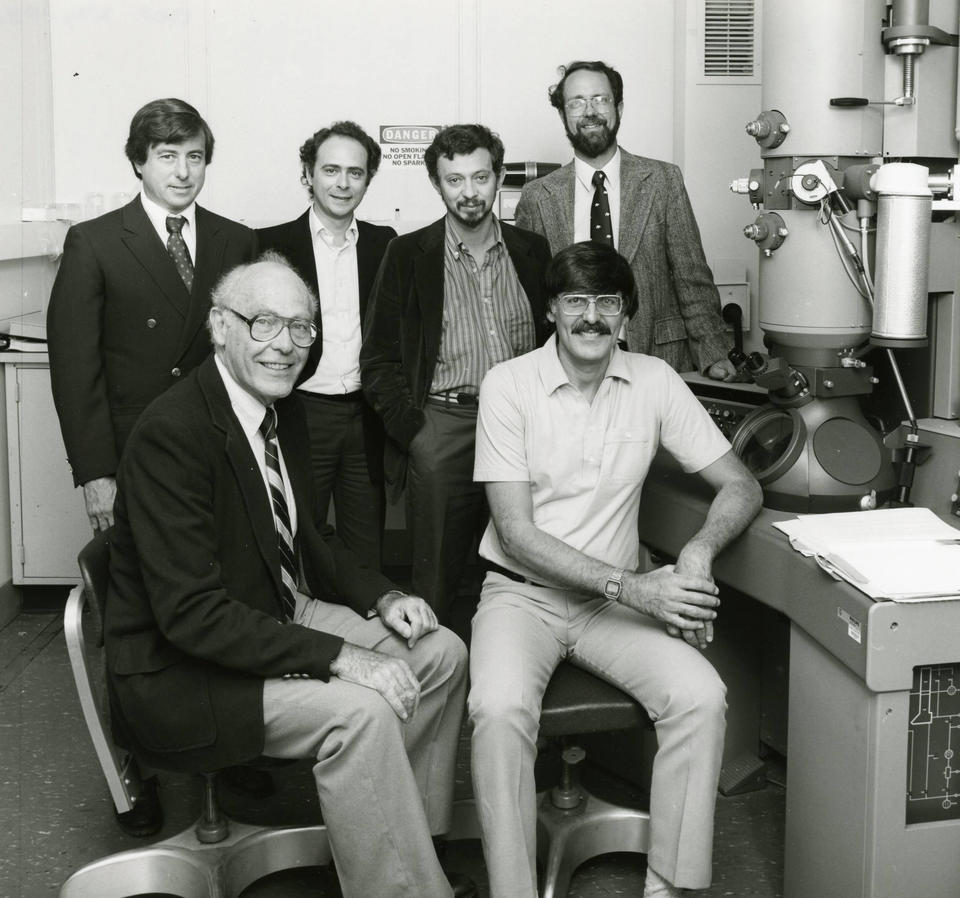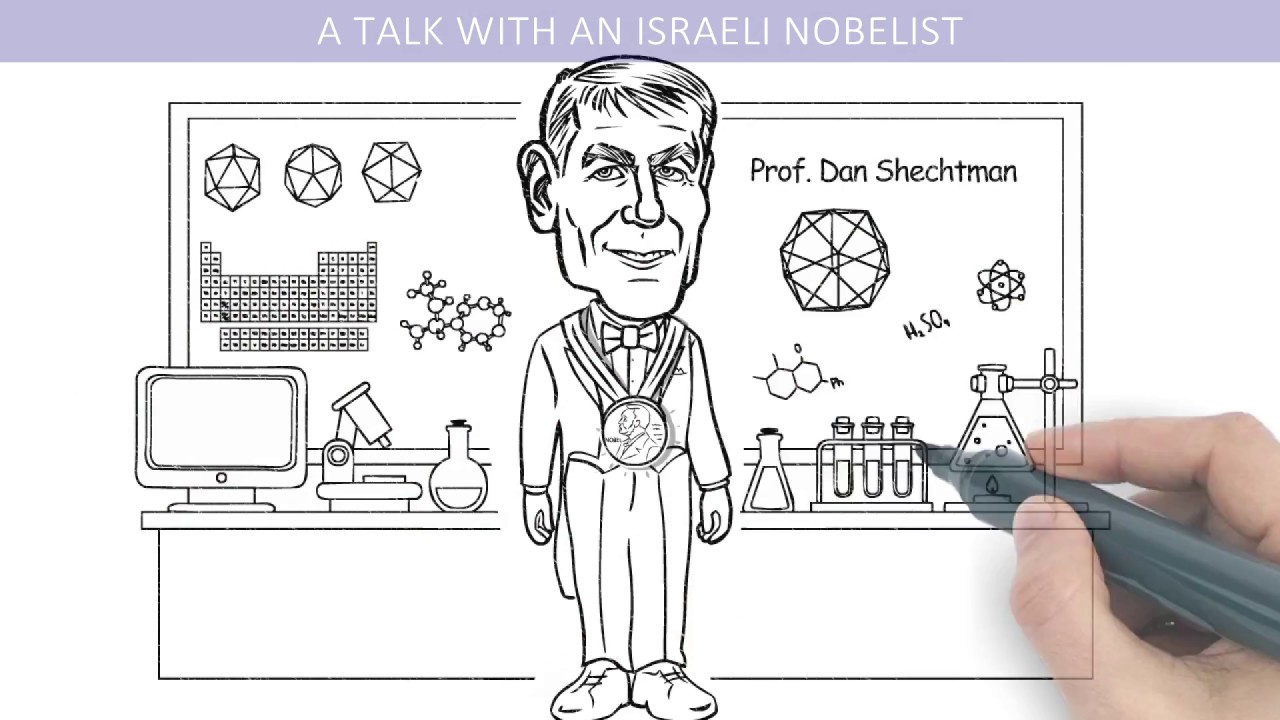The Nobel Moment: Dan Shechtman
On April 8, 1982, Shechtman was studying an alloy containing 86 percent aluminum atoms and 14 percent manganese atoms, which Boettinger lab member Frank Biancaniello had produced using melt spinning. Shechtman was looking at the arrangements that electrons ended up in after traveling through the material, known as their diffraction patterns.
Shechtman recorded in his lab notebook the symmetries he found in the diffraction patterns. Next to his note for sample number 1725, he wrote “(10 fold ???).”
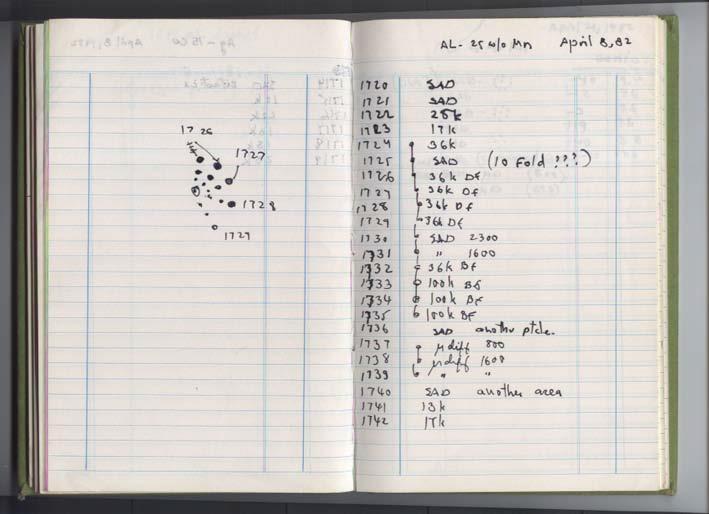
The diffraction pattern he observed seemed to have tenfold rotational symmetry: after a tenth of a full rotation, the crystal would look the same. But a crystal producing such an arrangement would never repeat, and contradicted the laws of crystallography that everyone, including Shechtman, had learned in school. He remembers, “I said to myself in Hebrew, ‘There ain’t no such animal,’” [אין חיה כז in Hebrew]. Based on previous experiments Shechtman performed years earlier, he knew that tenfold rotational symmetry of a diffraction pattern can result from tenfold “twins.” In the twinning phenomenon, two or more crystals of different orientations become fused together. In theory, twinned periodic crystals could produce a diffraction pattern mimicking that of a crystal with the forbidden symmetry.
As his logbook showed, Shechtman spent the whole afternoon of that day trying different TEM techniques to find the twins.
“I wanted to find the twins, record them and forget about it. If the tenfold diffraction pattern was a result of tenfold twins, it was not interesting,” Shechtman says.
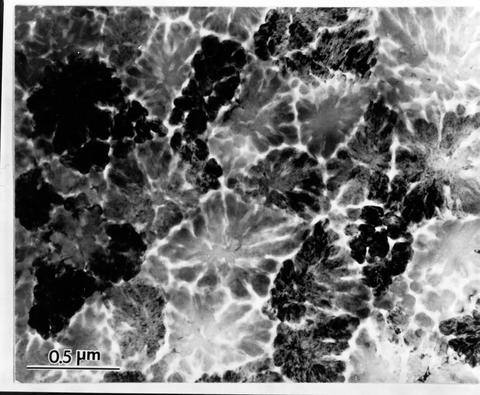
Shechtman then took his results to Cahn. “My initial reaction was, ‘Go away, Danny. These are twins and that’s not terribly interesting,’” Cahn later recalled.
Shechtman knew then that he had something far more interesting—something, in fact, that would be revolutionary. He just wasn’t sure what. Cahn soon became a supporter, saying, according to Shechtman, “Danny, this material is telling us something and I challenge you to find out what it is.”
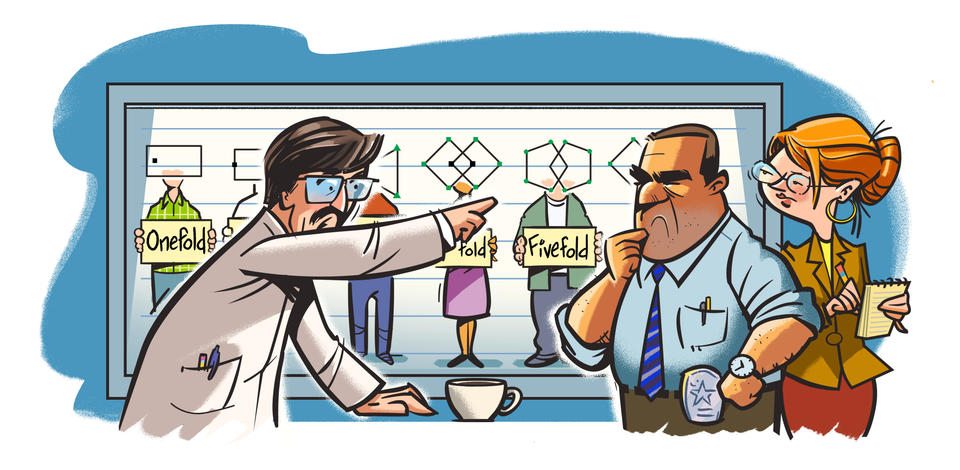
Shechtman finished his two-year appointment at NIST, and in 1983 went back to Technion, where he showed his results to Ilan Blech, a colleague in the materials engineering department. Blech developed a computer model to explain the results by postulating a crystal with icosahedral symmetry, made of groups of atoms placed in the corners of a 20-sided, soccer-shaped icosahedron joining in space according to specific “matching rules” that require the sides to fit together properly. With their collaborators, they came to realize that the tenfold pattern in the diffraction data was actually revealing a crystal with fivefold symmetry, something equally forbidden in crystallography. Shechtman and Blech submitted a paper to the Journal of Applied Physics, where it was immediately rejected. They then sent it to a lesser-known journal, Metallurgical Transactions A.
Meanwhile, Shechtman returned to NIST for the summer of 1984 and showed the rejected manuscript to Cahn. Cahn called up theorist Denis Gratias of Centre National de la Recherché Scientifique in Paris, France, and the three of them, along with Blech, wrote a shorter paper that they submitted to the prominent physics journal Physical Review Letters (PRL). The paper was published in November 1984. (The original paper would not be published for another year.)
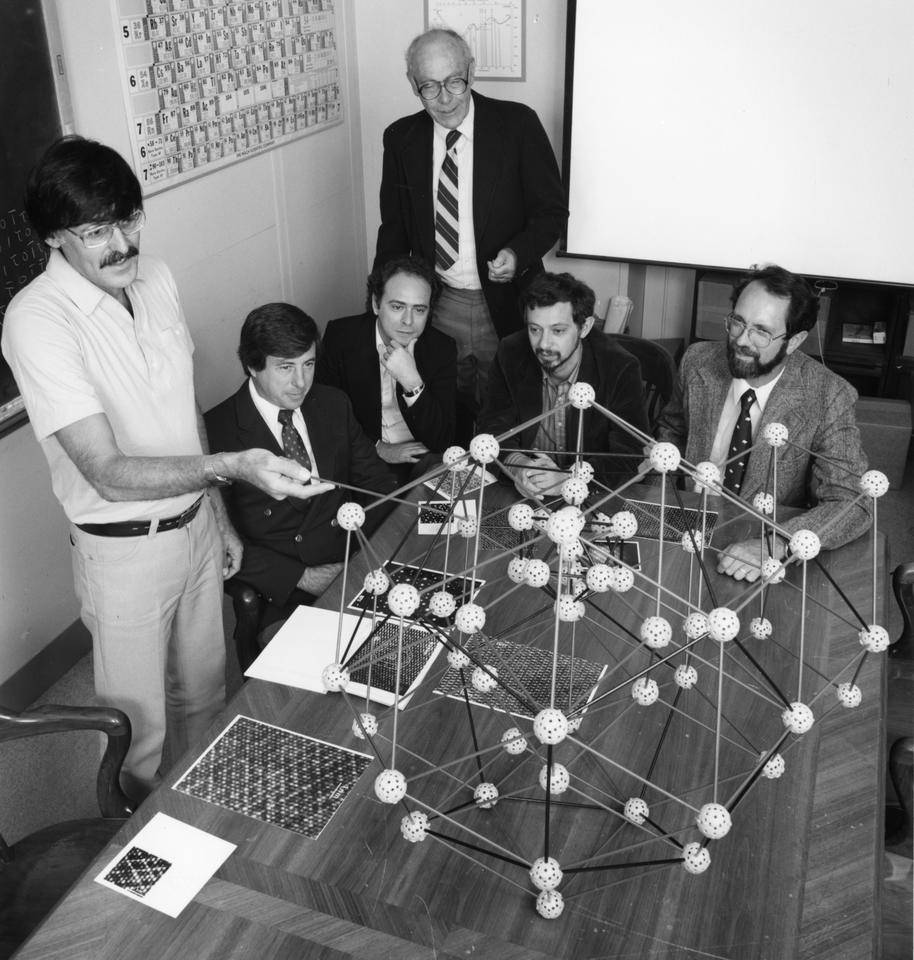
With Cahn, an internationally known figure in materials science, now publicly endorsing Shechtman’s revolutionary interpretation, crystallographers immediately took notice.
“Hell broke loose” when the PRL paper came out, Shechtman says. “In no time there was a fast-growing community of young, avant-garde scientists around the world who took my discovery and turned it into a fast-growing science.”
“It required rethinking everything we knew about what forms crystals can take,” recalls David Mermin, a physicist at Cornell University in Ithaca, New York, who would go on to spend a decade developing a classification scheme for non-periodic crystals, which, in at least one direction, do not repeat their structure as you move through the material. “It was really quite a shock when [Shechtman] came up with this discovery.”
Veronica Berns, a chemist currently doing postdoctoral research at Northwestern University, put it more cheekily in a comic she wrote about quasicrystals for the last chapter of her 2014 Ph.D. thesis: “Quasicrystals break all the rules, and they don’t give a #@$&.”
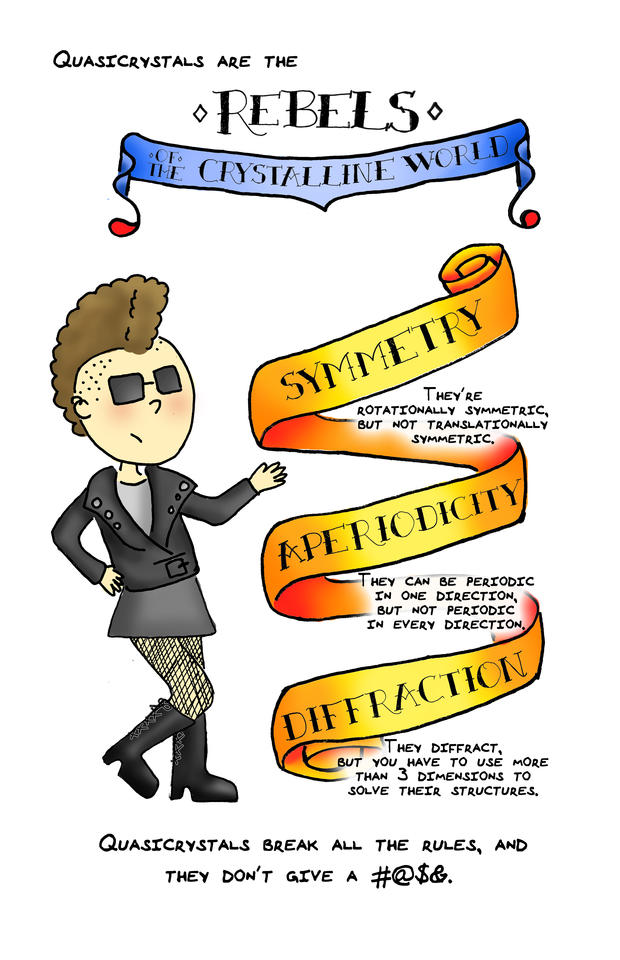
Unbeknownst to Shechtman in 1984, others had already thought about the possibility of icosahedral crystals. In particular, crystallographer Alan Mackay in 1982 had applied ideas that mathematician Roger Penrose developed in the 1970s to imagine how atoms could form non-periodic crystals. When physicist Paul Steinhardt of Princeton University was asked to review Shechtman’s PRL manuscript before publication, he realized Shechtman had discovered an example of what Mackay had theorized. Just five weeks after the Shechtman paper came out, Steinhardt, along with physicist Dov Levine at the Technion, published a paper, also in PRL, putting the results into a larger theoretical context and drawing additional attention to the discovery.
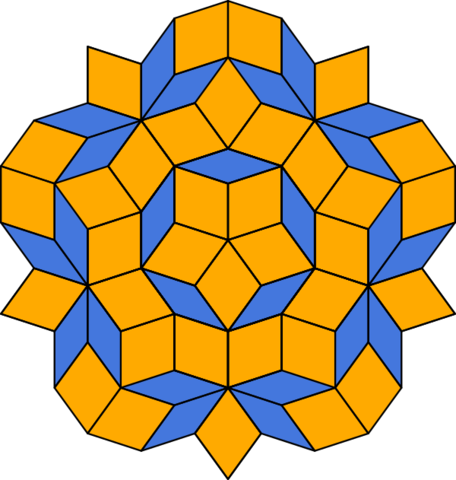
In the process, Levine coined the term “quasicrystal,” though Shechtman prefers “quasiperiodic material.”
It also turned out that at least one other scientist had previously stumbled upon unusual diffraction patterns similar to the ones Shechtman observed. But rather than pursue and publish the discovery, he filed it away and continued with more conventional research.
“That was a mistake on his part,” says Shechtman.
“TEM was the key tool,” Shechtman adds. “You can say, ‘OK, why you, there are thousands of electron microscopists around the world?’ … But it’s not enough to be an electron microscopist; you have to be an expert in electron microscopy, to understand what’s really going on. The number of experts in electron microscopy is far smaller—they’re few and far between.”
In 1983, Shechtman recommended that materials scientist Leonid Bendersky replace him at NIST. Bendersky was another expert in electron microscopy who got his Ph.D. at Technion. He became a visiting NIST scientist and later a staff scientist. Bendersky discovered in alloys of aluminum and manganese (and aluminum and chromium) a second quasiperiodic material, with a single tenfold, or decagonal, rotational symmetry. This discovery helped scientists to develop a general understanding of quasiperiodicity; more materials were soon discovered with other previously forbidden symmetries.
Shechtman asked the International Union of Crystallography (IUC) to change its definition of a crystal to incorporate the new understanding that he and others were producing. But the group’s cautious leaders were not satisfied with electron diffraction data alone, and insisted on having X-ray diffraction measurements of quasicrystals, which meant first producing larger samples. French and Japanese researchers provided the X-ray diffraction measurements in 1987. Shechtman presented the results at an IUC meeting in Australia, prompting the group to form a committee to take up the matter. The committee presented its report in 1991, with the following definition: “By crystal we mean any solid having an essentially discrete diffraction diagram, and by aperiodic crystal we mean any crystal in which three-dimensional lattice periodicity can be considered to be absent.”
Lack of periodicity does not mean quasicrystals are a disordered jumble, notes Ron Lifshitz, a professor of physics at Tel Aviv University in Israel; they just have a different kind of order. “The order is as good as you find in periodic crystals, but it’s not based on periodicity. It’s based on quasiperiodicity, which is a different mathematical notion.”
By this time, only one prominent opponent to quasicrystals remained, but he was a powerful figure with outsized influence: Linus Pauling, a two-time Nobel laureate and possibly the most famous chemist of the 20th century. Pauling continued to propose other explanations for what Shechtman had seen, invoking more and more exotic versions of twinning. He even reportedly said at one point, “There are no quasicrystals, only quasi-scientists.”
But Shechtman, with support of Cahn and others, maintained that quasicrystals did, in fact, exist. “[Pauling] thought he understood everything, but nobody does,” says Shechtman. “He tried to develop a model of periodic crystals that would give the same structure. And he failed, time and again.”
In his Nobel lecture, Shechtman identified five reasons that quasicrystals were not discovered until 1982: TEM, professionalism, tenacity, believing in yourself and courage. He also showed a slide of a cat walking confidently past a line of 20 German shepherds, illustrating the attitude he needed to continue defending his ideas when others were attacking them.
“I think it was good for science that Pauling gave Shechtman this fight,” says Lifshitz. “I’m not sure Shechtman enjoyed it … But [Shechtman] did know his stuff; he knew what he was doing. And he had the right personality to withstand all the insults.”
Pauling died in 1994, having never accepted quasicrystals. But chemistry had moved on, and in 2011, the Nobel committee recognized Dan Shechtman’s critical role in overturning a fundamental paradigm of crystallography by awarding him an unshared Nobel Prize.
